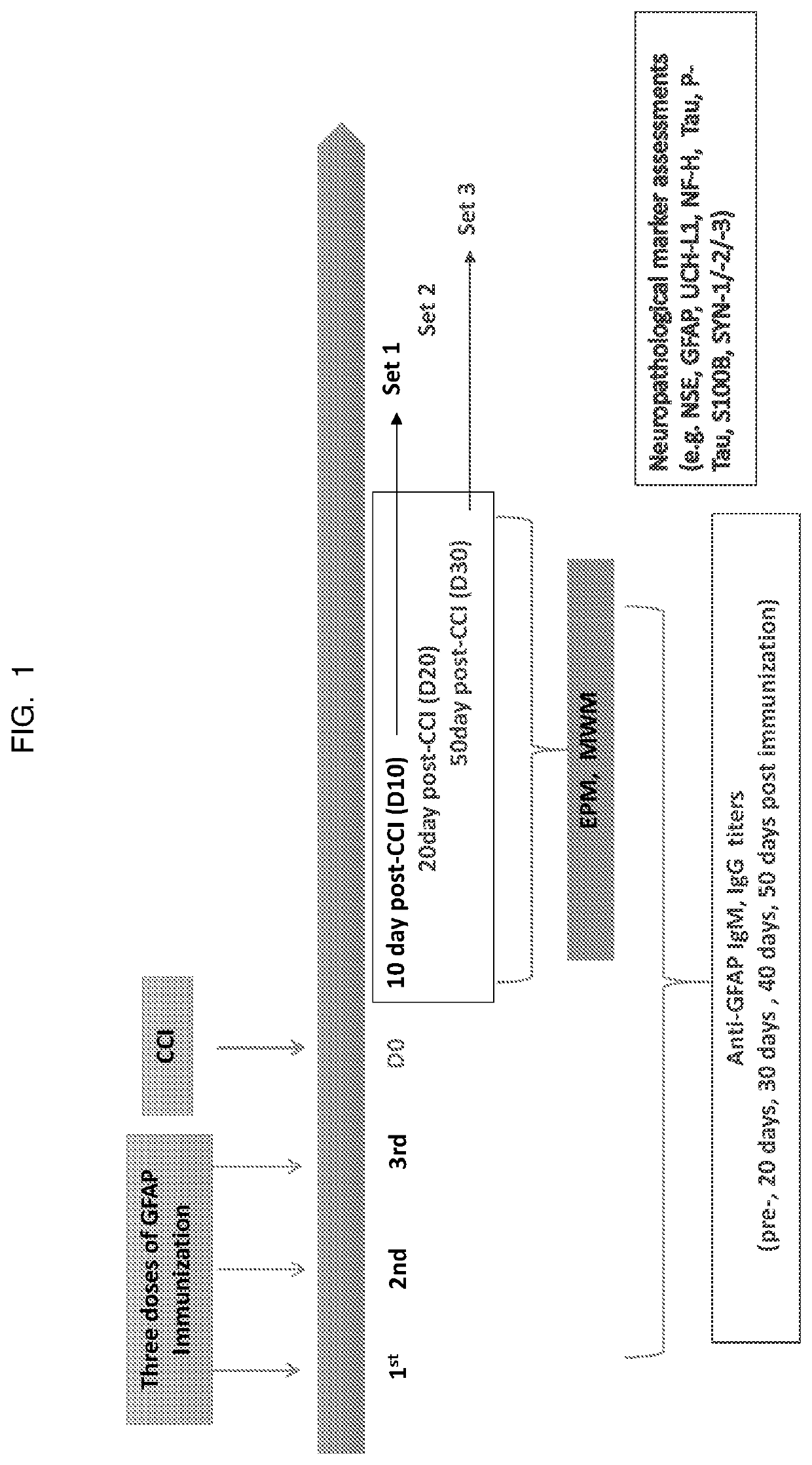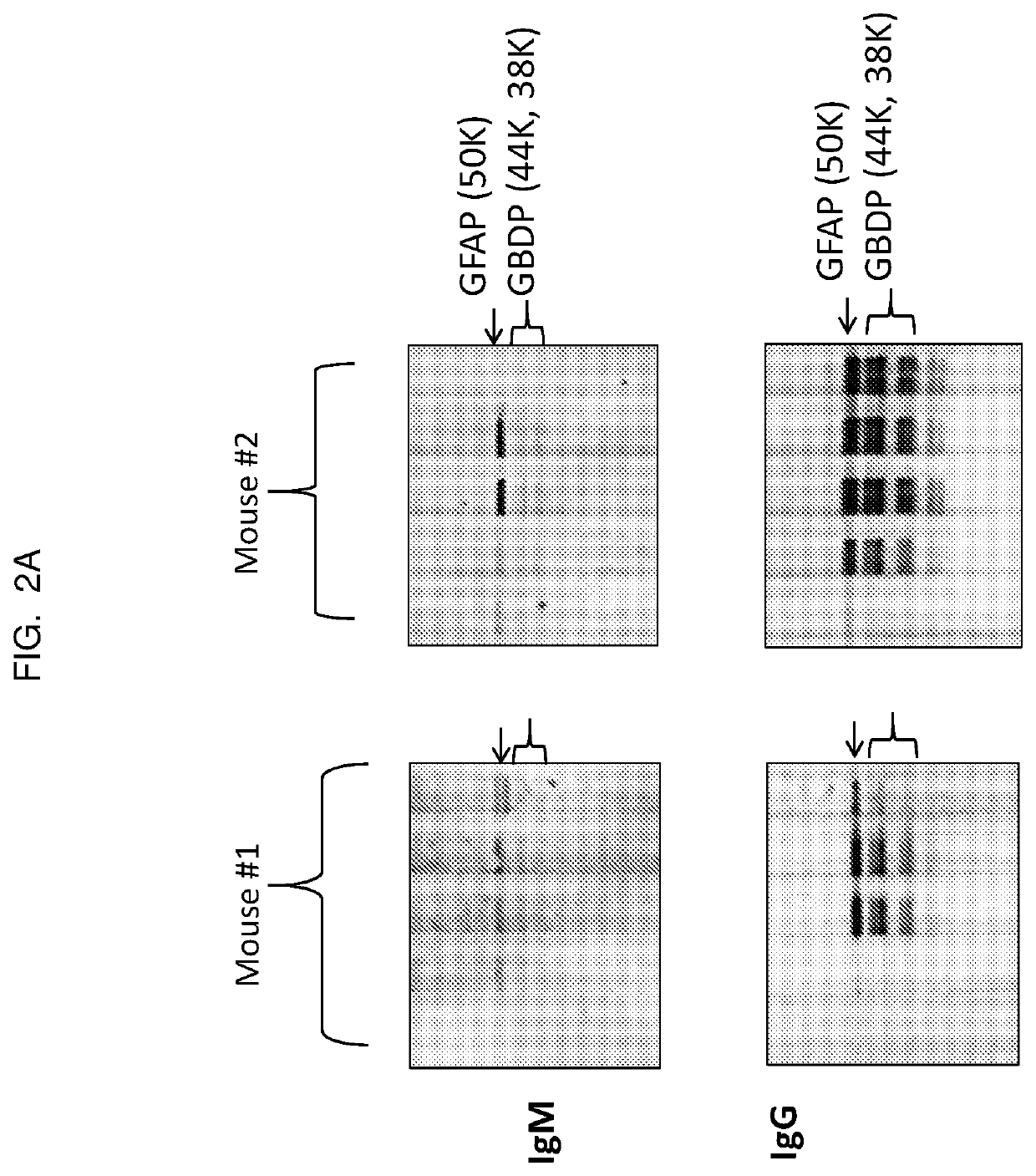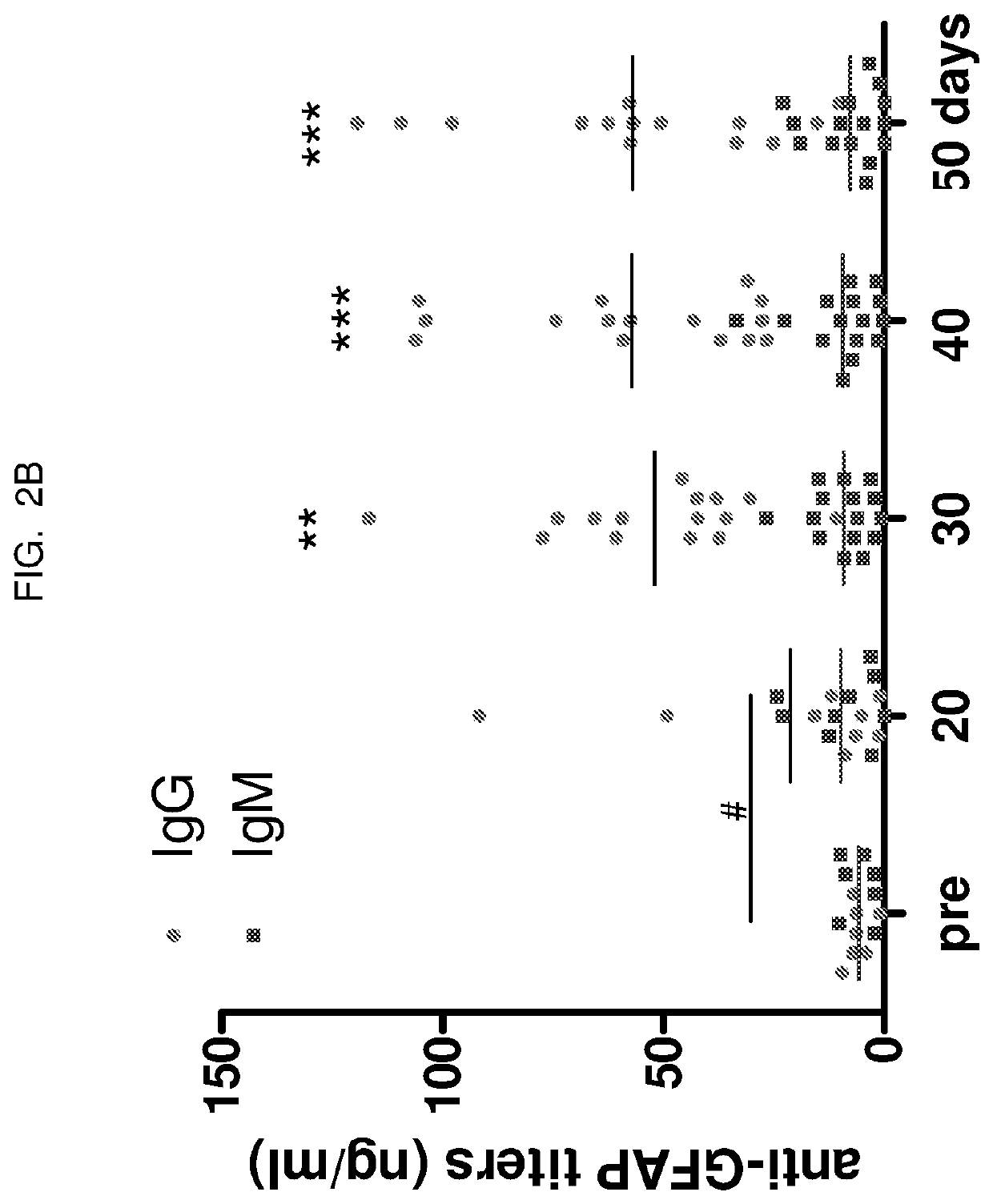Glial fibrillary acidic protein targeting immuno- and aptamer-based-therapy for neuroinjury, neurodegeneration, neuro-disease, and neuro-repair
a glial fibrillary acid and immuno-aptamer technology, applied in the field of neuroinjury, can solve the problems of no fda-approved therapy for treating any form of tbi, unintentional injuries, and 136,000 deaths annually, and achieve the effect of reducing circulatory tau
- Summary
- Abstract
- Description
- Claims
- Application Information
AI Technical Summary
Benefits of technology
Problems solved by technology
Method used
Image
Examples
example 1
ethods
[0086]A. Animal Care
[0087]Both female and male C57 / BL6 mice (6-8 weeks) were used for all experiments. Mice received first immunization at 6-8 weeks and receive cortical control impact (CCI) surgeries on 10-12 weeks as a model of traumatic brain injury. For biomarker assays, female and male mice were included, however only male mice were enrolled in behavioral examinations. Mice were housed in a temperature-controlled room (22° C.) with a 12-hour light / dark cycle. All animals had access to food and water ad libitum.
[0088]B. Immunizations
[0089]Mice were randomly assigned and evenly distributed into three treatment groups: naive, CCI, or CCI plus immunization with GFAP (GFAPimm+CCI). Each group contained 15-20 mice. For behavioral tests, at least 10 male mice were included in each group. Mice in the GFAPimm+CCI group were dosed every two weeks (for a total of three doses) by subcutaneously injecting with 25 μg GFAP mixed with incomplete Freund's adjuvant. The day on which CCI wa...
example 2
Anti-GFAP Antibody Increase after Initial Immunization
[0108]Three sets of mice, corresponding to different time courses post-injury, each set including 15-20 mice, were studied (10 days post-injury (set 1), 20 days post injury (set 2) and 50 days post injury (set 3)). All mice received a first GFAP protein immunization (25 μg intact GFAP) at 7 weeks old and were boosted with the same dosage every two weeks for a total of three doses. Serum titers were measured by manifold immunoblotting in order to perform TBI surgery (CCI) at a time when the mice are expressing high anti-GFAP titers. See FIG. 1 for a flowchart showing the protocol.
[0109]Titers were measured by manifold immunoblotting. Mouse serum recognized a cluster of protein bands with molecular weights between 38 and 50 kDa (see FIG. 2A). These bands were identified as GFAP and its breakdown products (GBDP). The density of these bands indicated that only few mice showed increased anti-GFAP IgG at 20 days after the initial injec...
example 3
y Immunization with GFAP Suppresses Astrocytes Activation Induced by TBI
[0113]In the brain, astrocyte activation is a direct response to physical trauma to the brain. Astrocytes transiently becoming hypertrophic and express high levels of intermediate filament proteins such as GFAP. To measure the GFAP levels, MSD™ homebrew ELISA kits were used for tissue analysis and GFAP commercial kits were used for serum analysis. FIG. 4 shows that pre-immunization with GFAP suppressed astrocyte activation induced by TBI. GFAP expression in ipsilateral cortex (FIG. 4A) and ipsilateral hippocampus (FIG. 4B) as well as GFAP levels in serum (FIG. 4C) were monitored. Compared to the naïve group, # indicates p<0.05, ## indicates p<0.01, ### indicates p<0.001. Compared to the CCI group, * indicates p<0.05, ** indicates p<0.01.
[0114]GFAP is activated after brain injury via increased GFAP expression in the CCI mouse ipsilateral cortex at 20 days (median 1250.0±263.5 ng / mg protein) and 50 days (576.6±96....
PUM
| Property | Measurement | Unit |
|---|---|---|
| Composition | aaaaa | aaaaa |
| Ratio | aaaaa | aaaaa |
| Mortality rate | aaaaa | aaaaa |
Abstract
Description
Claims
Application Information
 Login to View More
Login to View More - R&D
- Intellectual Property
- Life Sciences
- Materials
- Tech Scout
- Unparalleled Data Quality
- Higher Quality Content
- 60% Fewer Hallucinations
Browse by: Latest US Patents, China's latest patents, Technical Efficacy Thesaurus, Application Domain, Technology Topic, Popular Technical Reports.
© 2025 PatSnap. All rights reserved.Legal|Privacy policy|Modern Slavery Act Transparency Statement|Sitemap|About US| Contact US: help@patsnap.com



